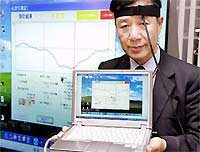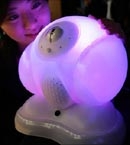This groundbreaking wireless technology could extend the battery life of your smartphone or wearable device by up to five times on a single charge.
Scientists have developed a new wireless technology that may someday rival the currently popular wireless communication technologies like Bluetooth. This innovative technology requires so little energy that it can enable devices to operate five times longer on a single charge.
Currently, the main wireless technologies—including Wi-Fi, 5G, and Bluetooth—embedded in devices like smartphones and wearables rely on classic radio configurations. They transmit data through electromagnetic waves generated by modulated electromagnetic fields.

New wireless technology may replace Bluetooth in the future. (Photo: Tatiana Meteleva via Getty Images).
However, this new alternative technology relies on electric field modulation. Devices transmitting signals swap out power amplifiers used in conventional wireless technology for voltage amplifiers that generate short-range electric fields.
These voltage amplifiers also create weak electromagnetic fields, but the receivers—unmodulated electrodes rather than tuned antennas—are configured to only collect data transmitted through the electric field. (Conventional radio systems generate electric fields alongside electromagnetic fields, but these dissipate quickly and are not used for information transmission.)
Power is only consumed by the receiving device when there is a charge or discharge on the receiving electrodes—a process known as capacitive coupling—rather than through continuous energy transmission through the air as in classic radio configurations. Thus, the new technology is called “Electric Potential Sensor Communication” (EPSComm), consuming a fraction of the energy used by Bluetooth.
“This new technology means that wearable and mobile devices will be able to operate longer when charged. More fundamentally, smaller batteries can be used, allowing for further miniaturization of devices thanks to the energy-saving capabilities of this new communication technology. This opens up new possibilities for small wearable devices, such as earbuds (smart headphones), smart rings, or even electronics integrated into clothing,” said Daniel Roggen, a professor of wearable technology at the University of Sussex.
In tests, Roggen’s team found that EPSComm optimizes power consumption to be ten times less than Bluetooth, potentially allowing device batteries to last four to five times longer between charges.
EPSComm has achieved data throughput of up to 600 kilobits per second, a speed sufficient for audio, video, and virtual reality (VR) applications. While modern Bluetooth often has higher data transmission rates, the first generation of Bluetooth transmitted at only 125 kbps.
EPSComm’s electromagnetic signals travel much shorter distances than Bluetooth, which is a trade-off, but it also means reduced risks of eavesdropping or signal interference.
“However, instead of completely replacing Bluetooth, this new technology could complement wireless standards in future devices,” Roggen noted.
For instance, someone might connect their headphones to their smartphone using EPSComm, but if they move out of range, the system will automatically switch to Bluetooth, which has a much longer range.
The team has built several EPSComm prototype devices, but the transmitter and receiver currently measure approximately 3 x 3 cm. This size is too large to fit into today’s smartphones or wearable devices, such as running headphones.
After establishing a working prototype, the researchers are seeking industrial partnerships to reduce the size of the components so they fit into small personal devices.




















































